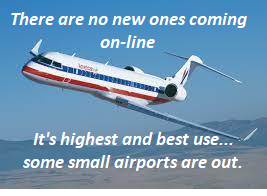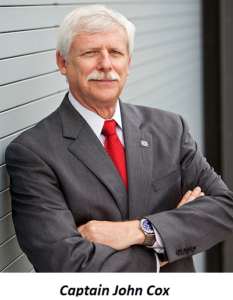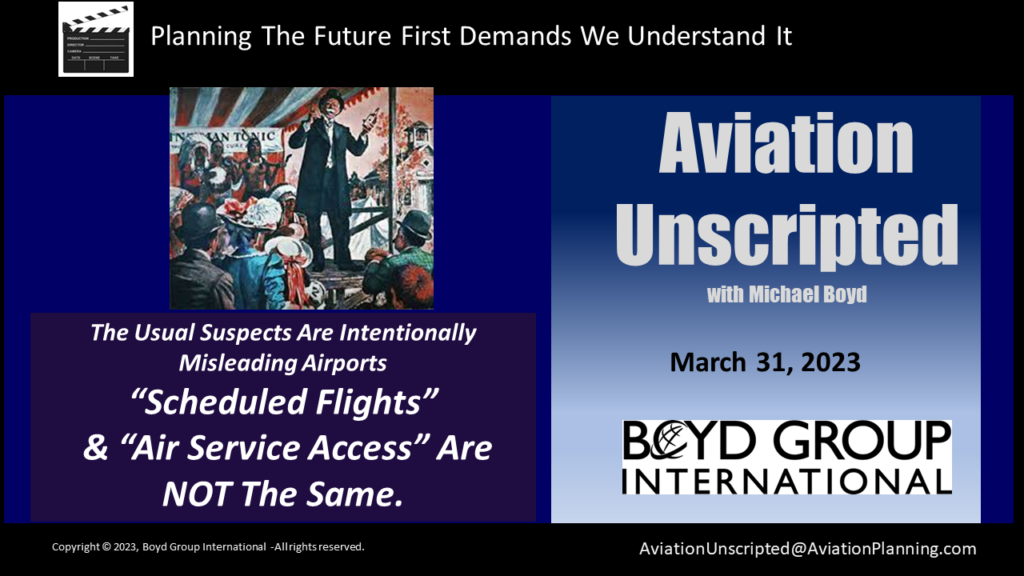Air Service Quality Surveys & Reporting:
Choose Whatever Fits Your View
Consumer satisfaction regarding airline service apparently is a function of whatever media channel you tune into. Or, whatever airline industry is out there.
Apparently, there is more than one.
Every April or so, some academics issue an airline “quality” report which is not much more than opinions based on simply re-jiggering data off the DOT website. It used to be fun reading, with wild stories about how airlines even made children sit in the back of the airplane, and other outrages against society. That commentary is long gone, leaving us with boring opinion tables that get panting press coverage, notwithstanding the fact that it’s all just sourced from public data, anyway.
Last week we had the occupant of the White House and the DOT secretary describe an industry that the DOT has graciously allowed to use bigger planes in the Northeast to reduce flights and carry more people. An industry being well served by the FAA’s ATC system – or at least that was implied.
They told us about a nasty airline industry that cancels flights and then charges the passengers a re-booking fee. An airline industry that routinely hides gotcha fees until after the passenger books. An airline industry that intentionally tries to gouge families wanting to sit together.
‘Course, most of this described an airline industry that only existed in the obviously very muddled and confused mind of the presenter.
Consumer Surveys. Take The One You Like Best. A couple weeks ago a report was published by an entity, ranking Southwest at the bottom of the consumer perception pile.
Then last week we had J.D. Power grandly tell us that Southwest is at the top of consumer perceptions. These folks went on to ominously opine:
For customers, “planes are crowded, tickets are expensive, and flight availability is constrained,” according to J.D. Power travel intelligence lead Michael Taylor in a written statement. If that continues, “travelers will reach a breaking point and some airline brands may be damaged.”
The “crowded flights” comment is the warning buzzer. Flights don’t get crowded. They get full, with each passenger having a size-determined seat. Nobody standing in the aisle hanging onto a strap, as is at least implied. Oh, and by the way, load factors are still below what they were in the 4th quarter of 2019, just before the arrival of CCP-Covid.
“Some airline brands may be damaged?” Meaning specifically what? He didn’t mention how the FAA is doing a lot of the “constraining” with a collapsing ATC system. Maybe he doesn’t know.
Take Whatever Is Tossed Out & Don’t Question. Now here’s the point: Nobody in the media, from the incompetent depths of some of the gadfly aviation-geek websites, up to the heights of major networks, has bothered to question any of this.
The fact is today “fact checking” usually dead-ends with a confidently repeated quote from – fill in the source: the DOT secretary, an executive from a survey company, a semi-ethical consumer jihadist, or just an “unnamed source.” These sources are strictly to be accepted ex-cathedra. (Google it, if you must.)
A good example was the press conference noted above. It was rife with outright nonsense and untruths. Yet it was never questioned.
In some cases, such as some of these talking-head network correspondents, the questions asked are actually intended to divert the truth and protect the officials involved.
One well-established toady asked the DOT secretary if consumers should be upset that his ATC system is inflicting delays and reduced capacity. The secretary just harrumphed and accused airlines of making billions in profits. The empty-suit network hack took that as the complete explanation – and the public has the answer.
Opportunity? The sorry state of aviation media reporting might represent a real opportunity for someone to step in with reporting and research that would fearlessly question the “sources” that most of the Fourth Estate today reveres and worships.
This is not to say that all of the aviation reporting is tilted, half-baked, and politically tainted. There are indeed some incredibly qualified reporters and network correspondents. The shame is that their work gets side-tracked, and smoke screened by the second raters.
Caveat reader.
______________
Let’s Face Reality.
Traditional Air Service
Development Approaches
Focus On Yesterday’s Air Transportation System
Do a news search.
Take a gander at the raft of stories recounting the dangers, travails and perils facing rural, small and even some mid-size airports. The focus tends to ramble between the economically disastrous loss of air access, to failing “regional airlines,” to heroic civic efforts to land “commercial flights” – in most cases without any determination of where they may go.
It’s time to come up for air. Real air service development reality air.
The air transportation system has changed. The understanding how it has evolved within the range of communication channels seems to be non-existent. Yet, the methodologies are still grounded in the fantasy that the range of airlines and the role of air travel haven’t changed.
Take a look at the Small Community Air Service Development Grant program. (SCASD) It’s two decades old. It’s based on an airline system that no longer exists, and it attempts to address things that can’t be fixed. Or, are completely nonsense.
 How about fixing “higher than average fares?” The fact is that there is no such metric in regard to air travel, which is a different product at each community. Or, the need to increase competition to get fares down. Yikes, there is not airline industry with players that would bite on that. Besides, SCASD grants can’t even be used to subsidize flights where another airline is already flying.
How about fixing “higher than average fares?” The fact is that there is no such metric in regard to air travel, which is a different product at each community. Or, the need to increase competition to get fares down. Yikes, there is not airline industry with players that would bite on that. Besides, SCASD grants can’t even be used to subsidize flights where another airline is already flying.
We’ve put together a 14 minute informational webinar on the seven new imperatives to address air service recruitment in the new airline environment. Every airport may want to take a look. It illuminates the future.
Click here, and get insights that shatter a lot of ambient air service thinking that has communities wasting money and time.













